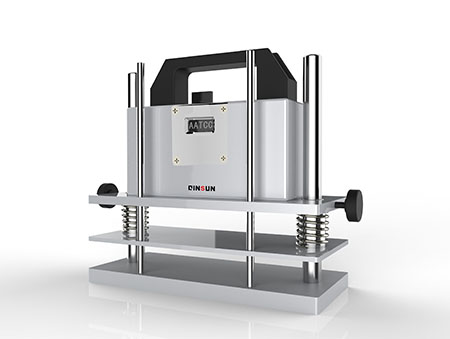Analysis of the current commonly used textile washing technology
After the textiles are processed in multiple processes of spinning, dyeing and finishing, and garment making, they generally need to be washed with water to achieve decontamination, shrink-proof, softening, dehairing or some special visual effects, so that the garment can be integrated. The performance is closer to normal, and the color is more natural.
According to the purpose of washing water, it can be roughly divided into the following types of washing water:
1.Wash soft
Most clothing requires softness. At the request of the customer, a softener is added to adjust the feel of the clothes when washing and shrinking.
Put the clothes in a pool of warm water at 40°C and 2 g/L softener, wash for a certain period of time, dehydrate and dry.
Washing softness requirements: After washing, the shrinkage rate of the garment decreases, and the hand feels slightly soft. Washing and softening are generally arranged in the first process of washing or at the same time as other washing steps.
2.Shrunk
When the fabric shrinkage rate exceeds the standard, wash a cloth sample before making the garment, measure the shrinkage rate in the warp and weft directions, convert it to the size of the garment, and then cut the material proportionally. After making the sample, wash the test to make the shrinkage rate of the garment meet the standard. After this type of clothing is ready, it must be washed. And the size after shrinking must be consistent with the test sample. This requires [washing and shrinking] to have a unified process.

Washing and shrinking process: Put the garment in a warm water 40℃ pool, soak for half an hour (press with a stick from time to time in the middle of the way to soak all of it), take out the dehydration, and dry it.
Washing shrinkage requirements: After washing, the shrinkage rate of the garment will be reduced to 3% (Note: It is different according to customer requirements and standards).
3.Wash and clean
Exported to certain * products, it is required to ensure that there is no formaldehyde or low formaldehyde. At present, in the dyeing and finishing industry, resin processing technology is widely used for anti-wrinkle and shrink-proof finishing. Some fabrics with formaldehyde emit the smell of formaldehyde in the space, so that the original formaldehyde-free clothes absorb a small amount of formaldehyde. If you do not pay attention, it is easy to cause breach of contract.
Washing and cleaning process: 40-50℃ soaping (washing powder 1g/l, soda ash 2g/l), water washing, dehydration and drying.
Cleaning requirements: no peculiar smell and formaldehyde on the cloth.
4.To the hair
Cotton yarn evolves into clothes after multiple production processes of spinning, dyeing and finishing, and garment making. The cloth surface undergoes various frictions during various processing processes, and the hairiness of the cloth surface is prominent and uneven, which affects the appearance and feel. In order to improve its appearance or improve its anti-pilling ability (Pilling resistance), the common processing method is enzymatic washing processing to achieve the purpose of hair removal.
Hair removal process: enzyme washing (acidic conditions, 1-2g/L), water washing, dehydration, and drying.
Hair removal requirements: smooth hairiness on the cloth surface. Powerful, the color meets the standard.
5.Non-iron (anti-wrinkle)
Cotton fabric garments, if only subjected to general washing treatment, the garments are easy to wrinkle during the wearing process, which affects the appearance. At present, the most popular solution is to add resin in the wet processing process for non-iron finishing. The non-iron finishing can be carried out separately during the shaping process of the fabric or the washing process of the garment. According to the type of resin used, the processing process is also different.
Non-ironing process: about 60g/L of resin plus catalyst washing (remarks: different according to requirements), dehydration (to maintain a certain moisture content), ironing, and drying.
Non-ironing requirements: flat, not easy to wrinkle, strong, and color up to standard.
6.Denim washing
The principle of applying cellulase to stone-like finishing of denim is to use cellulase to hydrolyze part of the cellulose, so that the indigo bromide staying in the amorphous area of the cellulose will also fall off, thus making the surface of the denim The effect is the same as stone grinding. The difference between the two is that the stone mill is a mechanically abraded fiber, while the enzymatic method mainly relies on the biocatalytic hydrolysis of the fiber.
Denim washing process: enzyme washing (or adding stone), washing and drying.
Denim washing requirements: reduce the hair on the cloth surface, have a stone grinding effect (fading, blooming), and prevent back dyeing.
7.Comprehensive washing
Combine the above several washing methods to perform multiple washings (according to the actual effect, you can choose to carry out at the same time).
The above is the relevant content answered in detail for you, hope to help you, if you need to purchase, you are welcome to come to consult!
2021-11-19 14:00
- Related News
FAQs about Garment processing equipment
What is the Vertical Flame Test?
What is a needle flame tester?
What is a Dry Microbial Penetration Tester?
Top 10 Fiber Fineness Testing Instruments
Top 10 Penetration & Permeability Testing Instruments
Top 10 Comfort Testing Instruments
